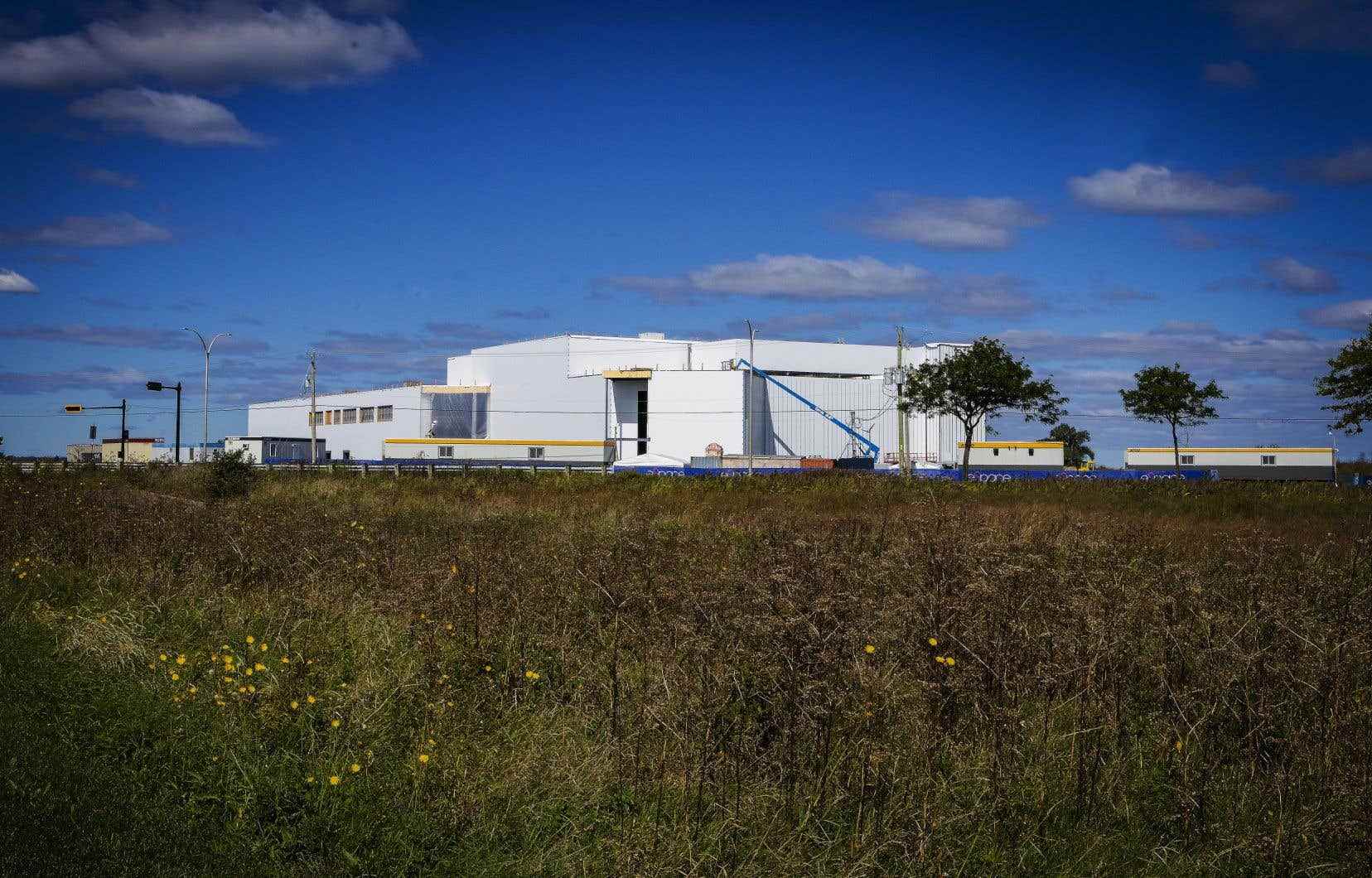The construction in Longueuil of a vertical farm by GoodLeaf, owned by the giant McCain, will lead to the loss of soil “with excellent agricultural potential” over nearly 12 hectares, an area equivalent to about twenty football fields.
The Commission for the Protection of Agricultural Land (CPTAQ) has authorized a division of the multinational agri-food company to acquire 38 hectares of cultivable land. The company plans to use a third of it to build a vertical greenhouse producing young shoots and mini green vegetables for grocery stores in Quebec and Atlantic Canada.
The company declined to answer questions from the To have to about the possibility of expanding its production to the rest of the acquired area, land currently leased to a local farmer. By email, she declined to comment on the case.
In documents it provided to Quebec’s farmland guardian, however, the company says it plans to build a seedling plant on this farmland in Longueuil, a stone’s throw from the airport in Saint -Hubert. The construction of one of them is already well advanced.
This vertical greenhouse – a building with few windows and which relies on hydroponic systems – should reach an area of 70,000 square feet, according to these documents. In addition to this building, there will be parking areas for employees and visitors, as well as maneuvering areas for truck transport.
However, the lots acquired are based on class 2 soils, ie “soils with excellent agricultural potential”, according to data from the Canada Land Inventory (CLI), which assesses the quality of land in the country. A situation that makes the agricultural community react.
“We don’t like it that much”
“We don’t really like this type of project,” recognizes the general manager of the Union des producteurs agricole (UPA), Charles-Félix Ross. At the end of the day, an area of excellent agricultural land is sacrificed. And to do what ? To concrete the earth”, he says, explaining that the resource that is the soil is therefore no longer recoverable.
All Decisions [concernant ce projet] were taken a few months before we came to power.
He compares the GoodLeaf project to “an industrial complex and an agricultural factory”, rather than a simple greenhouse: “There are parking spaces and handling areas. This installation could have been in a white zone provided for that [comme un parc industriel]. Also, when you allow installation in an agricultural zone, well, that comes with tax advantages, like certain deductions. »
This type of initiative is not part of an “overall vision”, according to him.
In place for less than a year, the new Longueuil administration of Mayor Catherine Fournier assures that it will refuse in the future any project of the kind that would eat away at agricultural land. “All decisions [concernant ce projet] were taken a few months before we came to power,” explains the mayor’s special adviser, Louis-Philip Prévost.
The City wants to protect the cultivable land on its territory, which could have been done, especially since it was Longueuil that owned the coveted lots. “If we were presented with a project like this today, would we accept that it be built in an agricultural zone? The answer is simple: no,” he says, adding that GoodLeaf’s activities respond to a demand for food self-sufficiency and that the City’s position has nothing to do with the company. .
40% of agricultural land deserted
“The acquisition of very good land to build a vertical farm or greenhouses — because we are talking about very good land here — should give rise to reflection on the development of this sector in Quebec”, believes Michel Saint-Pierre, co-president of the Institut Jean-Garon, a Quebec think tank specializing in agriculture.
The question is all the more important, he continues, since the government intends to double the volume of greenhouse cultivation in the province by 2025, according to the Strategy for the growth of greenhouses in Quebec published in the fall of 2020. objective: to be more self-sufficient in terms of food.
For many years, Mr. Saint-Pierre was Quebec’s Deputy Minister for Agriculture, as well as Director General of the Financière agricole, whose mission is to support the sector: “It’s not so much a question of zoning agriculture, but rather a concern that we must have as to the use we wish to make of the best soils. »
The land in Longueuil is of excellent quality, among the best in the province, he recalls.
And if the use of agricultural land is necessary to ensure the development of the sector, why not favor those that are less efficient and, above all, unoccupied, asks Mr. Saint-Pierre. According to estimates by the Jean-Garon Institute, 40% of the protected agricultural territory is not exploited and complete sections of regions are in the process of being deserted from their agriculture.
“Think of Lanaudière, the Bois-Francs region, the MRC de l’Érable, where entire rows have been emptied. Why not consider putting them in those agricultural facilities over there? And some of these regions are not far from Montreal. For that, you need an overall vision,” he points out.
